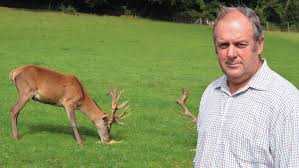DỊCH HOÀN THIỆN ĐỀ THI IELTS READING VÀ GIẢI THÍCH ĐÁP ÁN:
A spark, a flint: How fire leapt to life
[The control of fire was the first and perhaps greatest of humanity’s steps towards a life-enhancing technology.]
[Kiểm soát lửa là bước đầu tiên và có lẽ là vĩ đại nhất của nhân loại hướng tới một công nghệ nâng cao sự sống.]
To early man, the fire was a divine gift randomly delivered in the form of lightning, forest fire or burning lava. Unable to make flame for themselves, the earliest peoples probably stored fire by keeping slow burning logs alight or by carrying charcoal in pots. ĐOẠN 1
Đối với người nguyên thủy, lửa là một món quà thiêng liêng được ban tặng ngẫu nhiên dưới dạng sét, lửa rừng hoặc dung nham cháy. Không thể tự tạo ra ngọn lửa, những người đầu tiên có lẽ đã tích trữ lửa bằng cách đốt cháy những khúc gỗ cháy chậm hoặc mang than trong nồi.
How and where man learnt how to produce flame at will is unknown. It was probably a secondary invention, accidentally made during tool-making operations with wood or stone. Studies of primitive societies suggest that the earliest method of making fire was through friction. European peasants would insert a wooden drill in a round hole and rotate it briskly between their palms. This process could be speeded up by wrapping a cord around the drill and pulling on each end. ĐOẠN 2
Làm thế nào và ở đâu con người học cách tạo ra ngọn lửa theo ý muốn vẫn chưa được biết. Nó có lẽ là một phát minh thứ cấp, tình cờ được tạo ra trong quá trình chế tạo công cụ bằng gỗ hoặc đá. Các nghiên cứu về các xã hội nguyên thủy cho thấy phương pháp tạo lửa sớm nhất là thông qua ma sát. Nông dân châu Âu sẽ cắm một mũi khoan gỗ vào một lỗ tròn và xoay nhanh nó giữa hai lòng bàn tay của họ. Quá trình này có thể được đẩy nhanh hơn bằng cách quấn một sợi dây quanh mũi khoan và kéo ở mỗi đầu.
The Ancient Greeks used lenses or concave mirrors to concentrate the sun’s rays and burning glasses were also used by Mexican Aztecs and the Chinese. ĐOẠN 3
Người Hy Lạp cổ đại đã sử dụng thấu kính hoặc gương lõm để tập trung các tia sáng mặt trời và kính cháy cũng được người Aztec Mexico và người Trung Quốc sử dụng
Percussion methods of fire-lighting date back to Paleolithic times, when some Stone Age toolmakers discovered that chipping flints produced sparks. The technique became more efficient after the discovery of iron, about 5000 years ago. In Arctic North America, the Eskimos produced a slow-burning spark by striking quartz against iron pyrites, a compound that contains sulphur. The Chinese lit their fires by striking porcelain with bamboo. In Europe, the combination of steel, flint and tinder remained the main method of fire lighting until the mid 19th century. ĐOẠN 4
Các phương pháp đốt lửa bằng sự dội lại có từ thời Đồ đá cũ, khi một số thợ chế tạo công cụ thời Đồ đá phát hiện ra rằng đá đánh lửa bị sứt mẻ tạo ra tia lửa. Kỹ thuật này trở nên hiệu quả hơn sau khi phát hiện ra sắt, khoảng 5000 năm trước Ở Bắc Cực, Bắc Mỹ, người Eskimo đã tạo ra tia lửa cháy chậm bằng cách cho thạch anh chạm vào pyrit sắt, một hợp chất có chứa lưu huỳnh. Người Trung Quốc đốt lửa bằng cách dùng tre đập vào đồ sứ. Ở châu Âu, sự kết hợp giữa thép, đá lửa và bùi nhùi vẫn là phương pháp đốt lửa chính cho đến giữa thế kỷ 19.
Fire-lighting was revolutionized by the discovery of phosphorus, isolated in 1669 by a German alchemist trying to transmute silver into gold. Impressed by the element’s combustibility, several 17th-century chemists used it to manufacture fire-lighting devices, but the results were dangerously inflammable. With phosphorus costing the equivalent of several hundred pounds per ounce, the first matches were expensive. ĐOẠN 5
Việc đốt lửa đã được cách mạng hóa nhờ việc phát hiện ra phốt pho, được một nhà giả kim người Đức tìm ra vào năm 1669 khi cố gắng biến bạc thành vàng. Bị ấn tượng bởi khả năng bắt lửa của nguyên tố này, một số nhà hóa học ở thế kỷ 17 đã sử dụng nó để sản xuất các thiết bị thắp sáng ngọn lửa, nhưng kết quả là nó gây cháy một cách nguy hiểm. Với giá phốt pho tương đương vài trăm bảng Anh mỗi ounce, những que diêm đầu tiên rất đắt đỏ.

1. Mua bộ đề gần 400 bài ielts reading - Dịch và giải chi tiết Chỉ 199k bao gồm toàn bộ đề trong bộ Cambridge ( từ bộ 1 -19) và nhiều đề thi thực tế ( xem danh sách 400 đề ielts reading tại đây). Xem bài mẫu tại đây, Bài mẫu 1, bài mẫu 2, bài mẫu 3. Giải đề bao gồm phần dịch bài đọc, dịch phần câu hỏi, giải thích chi tiết, ( chỉ có thể tải, in phần đề để luyện tập, phần giải chi tiết và dịch chỉ xem online).
>>>>>>> Đặc biệt tặng kèm Dịch và giải chi tiết bộ đề Ielts listening từ Cam 10-18 và tặng kèm hơn 300 đề Ielts thực tế ( không có lời giải chi tiết chỉ có đề và đáp án) ( khác với bộ 400 đề ở trên). Vui lòng điền thông tin theo form tại đây và thanh toán theo thông tin CK trong form.
2. Đặc biệt dành tặng 100 bạn hoàn thành buổi học thử miễn phí khóa học Ielts Speaking online 1 kèm 1, các bạn sẽ được tặng bộ đề 400k bài Ielts reading và bộ đề Ielts Listening bộ Cam từ 10-18 gồm bài dịch và giải chi tiết, giải thích từ vựng khó ( thời hạn sử dụng trong vòng 2 tháng). Xem thông tin khóa học Ielts Speaking online 1 kèm 1 và đăng ký học thử tại đây.
The quest for a practical match really began after 1781 when a group of French chemists came up with the Phosphoric Candle or Ethereal Match, a sealed glass tube containing a twist of paper tipped with phosphorus. When the tube was broken, air rushed in, causing the phosphorus self-combust. An even more hazardous device, popular in America, was the Instantaneous Light Box — a bottle filled with sulphuric acid into which splints treated with chemicals were dipped. ĐOẠN 6
The first matches resembling those used today were made in 1827 by John Walker, an English pharmacist who borrowed the formula from a military rocket-maker called Congreve. Costing a shilling a box, Congreves were splints coated with sulphur and tipped with potassium chlorate. To light them, the user drew them quickly through folded glass paper. ĐOẠN 7
Walker never patented his invention, and three years later it was copied by a Samuel Jones, who marketed his product as Lucifers. About the same time, a French chemistry student called Charles Sauria produced the first “strike-anywhere” match by substituting white phosphorus for the potassium chlorate in the Walker formula. However, since white phosphorus is a deadly poison, from 1845 match-makers exposed to its fumes succumbed to necrosis, a disease that eats away jaw-bones. It wasn’t until 1906 that the substance was eventually banned. ĐOẠN 8
That was 62 years after a Swedish chemist called Pasch had discovered non-toxic red or amorphous phosphorus, a development exploited commercially by Pasch’s compatriot J E Lundstrom in 1885. Lundstrom’s safety matches were safe because the red phosphorus was non-toxic; it was painted on to the striking surface instead of the match tip, which contained potassium chlorate with a relatively high ignition temperature of 182 degrees centigrade. ĐOẠN 9
America lagged behind Europe in match technology and safety standards. It wasn’t until 1900 that the Diamond Match Company bought a French patent for safety matches — but the formula did not work properly in the different climatic conditions prevailing in America and it was another 11 years before scientists finally adapted the French patent for the US. ĐOẠN 10
The Americans, however, can claim several “firsts” in match technology and marketing. In 1892 the Diamond Match Company pioneered book matches. The innovation didn’t catch on until after 1896, when a brewery had the novel idea of advertising its product in match books. Today book matches are the most widely used type in the US, with 90 percent handed out free by hotels, restaurants and others. ĐOẠN 11
Other American innovations include an anti-after-glow solution to prevent the match from smoldering after it has been blown out; and the waterproof match, which lights after eight hours in water. ĐOẠN 12
>>>>> Xem thêm:
♦ Tổng hợp câu trả lời, câu hỏi, từ vựng của hơn 70 chủ đề Ielts Speaking part 1
♦ Tổng hợp gần 400 đề thi Ielts reading ( bao gồm dịch, giải chi tiết, từ vựng)
Questions 1-8
Complete the summary below. Choose your answers from the box at the bottom of the page and write them in boxes 1 8 on your answer sheet.
NB There are more words than spaces so you will not use them all You may use any of the words more than once.
EARLY FIRE-LIGHTING METHODS
- Societies saw fire as a ….….(Example)…..… gift. Answer: heavenly
They tried to ...... (1) ...... burning logs or charcoal ...... (2) ...... that they could create fire themselves. It is suspected that the first man-made flames were produced by ...... (3) ......
The very first fire-lighting methods involved the creation of ...... (4) ...... by, for example, rapidly ...... (5) ...... a wooden stick in a round hole. The use of ...... (6) ...... or persistent chipping was also widespread in Europe and among other peoples such as the Chinese and ...... (7) ........ European practice of this method continued until the 1850s ....... (8) ....... the discovery of phosphorus some years earlier.
|
List of Words Mexicans; random; rotating despite; preserve; realising sunlight; lacking; heavenly percussion; Chance; friction unaware; without; make heating; Eskimos; surprised until; smoke
|
Questions 9-15
Look at the following notes that have been made about the matches described in Reading Passage 32. Decide which type of match (A-H) corresponds with each description and write your answers in boxes 9-15 on your answer sheet.
NB There are more matches than descriptions so you will not use them all. You may use any match more than once.
|
Example Answer could be lit after soaking in water H |
NOTES
9 made using a less poisonous type of phosphorus
10 identical to a previous type of match
11 caused a deadly illness
12 first to look like modern matches
13 first matches used for advertising
14 relied on an airtight glass container
15 made with the help of an army design
Types of Matches
A the Ethereal Match
B the Instantaneous Light box
C Congreves
D Lucifers
E the first strike-anywhere match
F Lundstrom’s safety match
G book matches
H waterproof matches
ĐÁP ÁN, GIẢI CHI TIẾT và DỊCH HOÀN THIỆN ĐỀ THI IELTS READING:
A spark, a flint: How fire leapt to life
Questions 1-8
Complete the summary below. Choose your answers from the box at the bottom of the page and write them in boxes 1 8 on your answer sheet.
NB There are more words than spaces so you will not use them all You may use any of the words more than once.
EARLY FIRE-LIGHTING METHODS/ PHƯƠNG PHÁP THẮP LỬA THUỞ BAN ĐẦU
Primitive Societies saw fire as a ….….(Example)…..… gift. Answer: heavenly
They tried to ...... (1)preserve...... burning logs or charcoal ...... (2) unware...... that they could create fire themselves. It is suspected that the first man-made flames were produced by ...... (3) .chance.....
Họ cố gắng giữ lại những khúc gỗ đang cháy hoặc than mà không biết rằng họ có thể tự tạo ra lửa. Người ta nghi ngờ rằng ngọn lửa nhân tạo đầu tiên được tạo ra một cách tình cờ
Giải thích: Đoạn 1&2
To early man, the fire was a divine gift randomly delivered in the form of lightning, forest fire or burning lava. Unable to make flame for themselves, the earliest peoples probably stored fire by keeping slow burning logs alight or by carrying charcoal in pots. ( = preserve)
How and where man learnt how to produce flame at will is unknown ( unware). It was probably a secondary invention, accidentally made during tool-making operations with wood or stone.
------------------------------------------------------------------------------------------------------------------------------------------------------------------------------------------------------------------------------------------------------------------------------
The very first fire-lighting methods involved the creation of ...... (4) friction...... by, for example, rapidly ...... (5)rotating ...... a wooden stick in a round hole. The use of ...... (6)percussion ...... or persistent chipping was also widespread in Europe and among other peoples such as the Chinese and ...... (7) Eskimos ........ European practice of this method continued until the 1850s ....... (8)despite ....... the discovery of phosphorus some years earlier.
Ví dụ, các phương pháp đốt lửa đầu tiên liên quan đến việc tạo ra ma sát bằng cách xoay nhanh một thanh gỗ trong một lỗ tròn. Việc sử dụng cách gõ hoặc đập liên tục các vật với nhau cũng phổ biến ở châu Âu và giữa các dân tộc khác như người Trung Quốc và Eskimos. Việc thực hành phương pháp này của người châu Âu vẫn tiếp tục cho đến những năm 1850 mặc dù người ta đã phát hiện ra phốt pho vài năm trước đó.
|
List of Words Mexicans random rotating despite preserve realising sunlight lacking heavenly percussion Chance friction unaware without make heating Eskimos surprised until smoke
|
Questions 9-15
Look at the following notes that have been made about the matches described in Reading Passage 32. Decide which type of match (A-H) corresponds with each description and write your answers in boxes 9-15 on your answer sheet.
NB There are more matches than descriptions so you will not use them all. You may use any match more than once.
|
Example Answer could be lit after soaking in water H |
NOTES
09.F made using a less poisonous type of phosphorus
được làm bằng loại phốt pho ít độc hơn
Giải thích: Đoạn 9
That was 62 years after a Swedish chemist called Pasch had discovered non-toxic red or amorphous phosphorus, a development exploited commercially by Pasch’s compatriot J E Lundstrom in 1885. Lundstrom’s safety matches were safe because the red phosphorus was non-toxic;
Answer:
1 preserve
2 unaware
3 chance
4 friction
5 rotating
6 percussion
7 Eskimos
8 despite
9 F
10 D
11 E
12 C
13 G
14 A
15 C
1. Mua bộ đề gần 400 bài ielts reading - Dịch và giải chi tiết Chỉ 199k bao gồm toàn bộ đề trong bộ Cambridge ( từ bộ 1 -19) và nhiều đề thi thực tế ( xem danh sách 400 đề ielts reading tại đây). Xem bài mẫu tại đây, Bài mẫu 1, bài mẫu 2, bài mẫu 3. Giải đề bao gồm phần dịch bài đọc, dịch phần câu hỏi, giải thích chi tiết, ( chỉ có thể tải, in phần đề để luyện tập, phần giải chi tiết và dịch chỉ xem online).
>>>>>>> Đặc biệt tặng kèm Dịch và giải chi tiết bộ đề Ielts listening từ Cam 10-18 và tặng kèm hơn 300 đề Ielts thực tế ( không có lời giải chi tiết chỉ có đề và đáp án) ( khác với bộ 400 đề ở trên). Vui lòng điền thông tin theo form tại đây và thanh toán theo thông tin CK trong form.
2. Đặc biệt dành tặng 100 bạn hoàn thành buổi học thử miễn phí khóa học Ielts Speaking online 1 kèm 1, các bạn sẽ được tặng bộ đề 400k bài Ielts reading và bộ đề Ielts Listening bộ Cam từ 10-18 gồm bài dịch và giải chi tiết, giải thích từ vựng khó ( thời hạn sử dụng trong vòng 2 tháng). Xem thông tin khóa học Ielts Speaking online 1 kèm 1 và đăng ký học thử tại đây.

.png)

.jpg)




